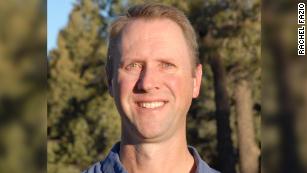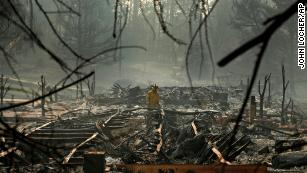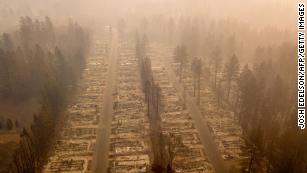As people struggled to evacuate, President Donald Trump in a tweet blamed the fires on
poor forest management and repeated the claims before his visit to California. While Trump did not explicitly call for an expansion of logging in his latest response, he has
previously touted this strategy as a way to curb fires. Meanwhile, the federal government is moving to allow commercial logging in areas such as the
Los Padres National Forest outside Santa Barbara, claiming it will prevent fires. Interior Secretary Ryan Zinke has
also blamed "environmental terrorist groups" for preventing the government from properly managing forests.
It is deeply troubling that Trump and his administration would support logging as a way to curb fires when studies have shown it's ineffective. In the most comprehensive
scientific analysis conducted on the issue of forest management and fire intensity -- which looked at more than 1,500 fires on tens of millions of acres across the Western United States over three decades -- we found that forests with the fewest environmental protections and the most logging actually tend to burn much more intensely, not less.
This may seem counterintuitive, but
logging leaves behind combustible twigs and branches on the forest floor, which can make fires spread faster. It also reduces the cooling shade of the forest canopy, which creates hotter and drier conditions, and the invasive weeds that take over readily burn. Denser forests buffer and reduce the winds that drive wildland fires, but this effect is largely eliminated by logging.
The fact is that Northern California's Butte County, which has been ravaged by the Camp Fire, had been heavily
logged in previous years. In the area immediately to the
east of Paradise, dead trees had been extensively logged and removed on both private and public lands, and commercial "thinning" operations had been conducted across large expanses of the nearby Plumas National Forest, supposedly to protect nearby towns from wildland fire.
But the Camp Fire burned through these heavily logged areas rapidly, leaving residents of Paradise and the surrounding towns with far too little time to evacuate.
Trump's call for increased logging also creates a dangerous and false sense of security. When politicians and federal land managers claim the latest commercial logging project will protect residential areas from encroaching wildland fires, people may not see the need to fireproof their homes.
The way forward to protect communities from wildland fire is not through the stump fields that Trump would like to create on our national forests and other forestland. It is through a purposeful and concerted focus on the communities themselves. We must help the residents living near wildlands make their homes fire-safe.
This involves basic precautions such as fire-resistant roofing, ember-proof exterior vents to prevent the wind from blowing firebrands into attic spaces, and rain gutter guards to keep dry leaves and needles from accumulating. Residents should also maintain their "defensible space," or areas within 100 feet of their homes, by pruning branches, small trees, shrubs and grasses at least once every year. This is the only type of "thinning" that will
effectively protect homes.
In fact, when
these steps are taken, and when homeowners are given the information and assistance they need, the great majority of homes survive even large wildland fires.
There is more that can be done, too. We must create and fund programs to ensure rapid and reliable warning as well as evacuation assistance for people and animals in particularly vulnerable areas. More should also be done to prevent unplanned human ignitions during extreme fire weather, with more rangers and law enforcement officers to stop illegal fireworks and campfires. Some power lines should be moved underground, while others should be shut down during extreme fire weather.
But none of this is possible if we continue operating with outdated and misinformed fire management
policies focused on suppressing backcountry fires and increasing logging. We need a 21st-century
approachthat simultaneously protects residents while preserving these rich ecosystems.
As a society we have a choice to make here. We can listen to voices promoting the politics of fear and opportunism, or we can pay attention to the science and prioritize community safety. Lives and homes hang in the balance of that decision.




No comments:
Post a Comment